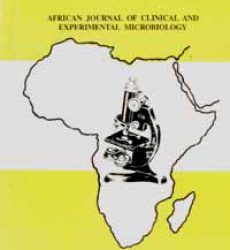Abstract
Cytomegalovirus (CMV) is a major public health problem throughout the world. It is the leading cause of congenital infections leading to neurological disabilities in children that result to severe sequelae such as sensor neural hearing loss, neuro-developmental delay and blindness. This study was conducted to determine the seroprevalence of human cytomegalovirus among pregnant women in Kaduna State, Nigeria. Three hundred and sixty three (363) blood samples were collected from 330 pregnant women attending antenatal clinics and 33 non pregnant women attending the Outpatient Department in three selected General Hospitals in Kaduna State. Serum obtained from the blood samples were examined
for the presence of CMV IgG antibodies by IFA method. About 94.8% of pregnant women tested positive to CMV IgG antibodies while all (100%) of the non pregnant women tested positive. There was no statistically significant association between CMV and pregnancy (÷2=1.784, df=2, p=0.182). Infection with CMV was strongly associated with zone location
(÷2=15.381, df,=2, p=0.000) and employment status of the women (÷2=5.519, df=1, p=0.018). There was no significant association between CMV infection and age, gravida, gestation age, education, number of marriages and history of previous transfusion. The high prevalence of CMV infection observed in this study indicates that the virus is prevalent in
the study area and it is therefore advisable that routine screening of CMV infection be implemented for all antenatal women in the State.
Keywords: Seroprevalence, Cytomegalovirus, IgG, Pregnant women, Kaduna, Nigeria
Download full journal in PDF below
Seroprevalence of Cytomegalovirus Infection amongst Pregnant Women in Kaduna State, Nigeria

